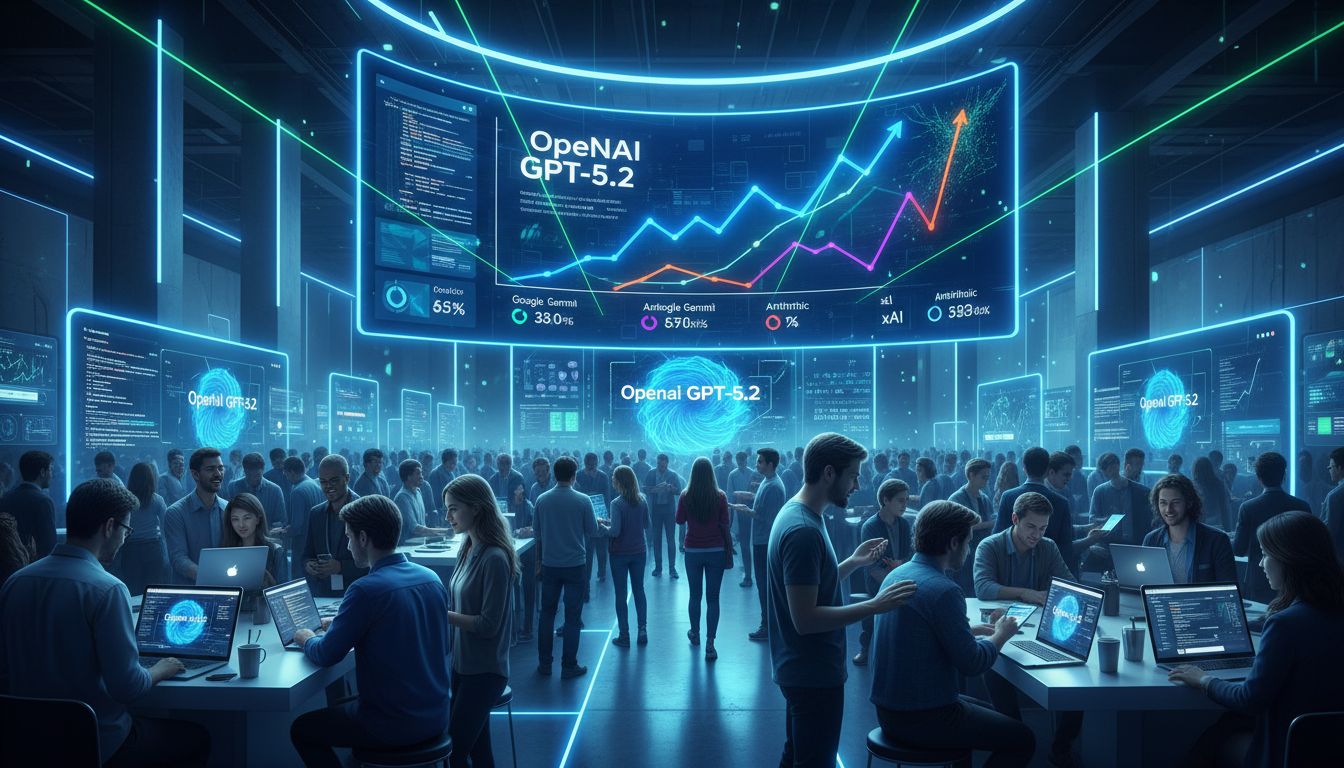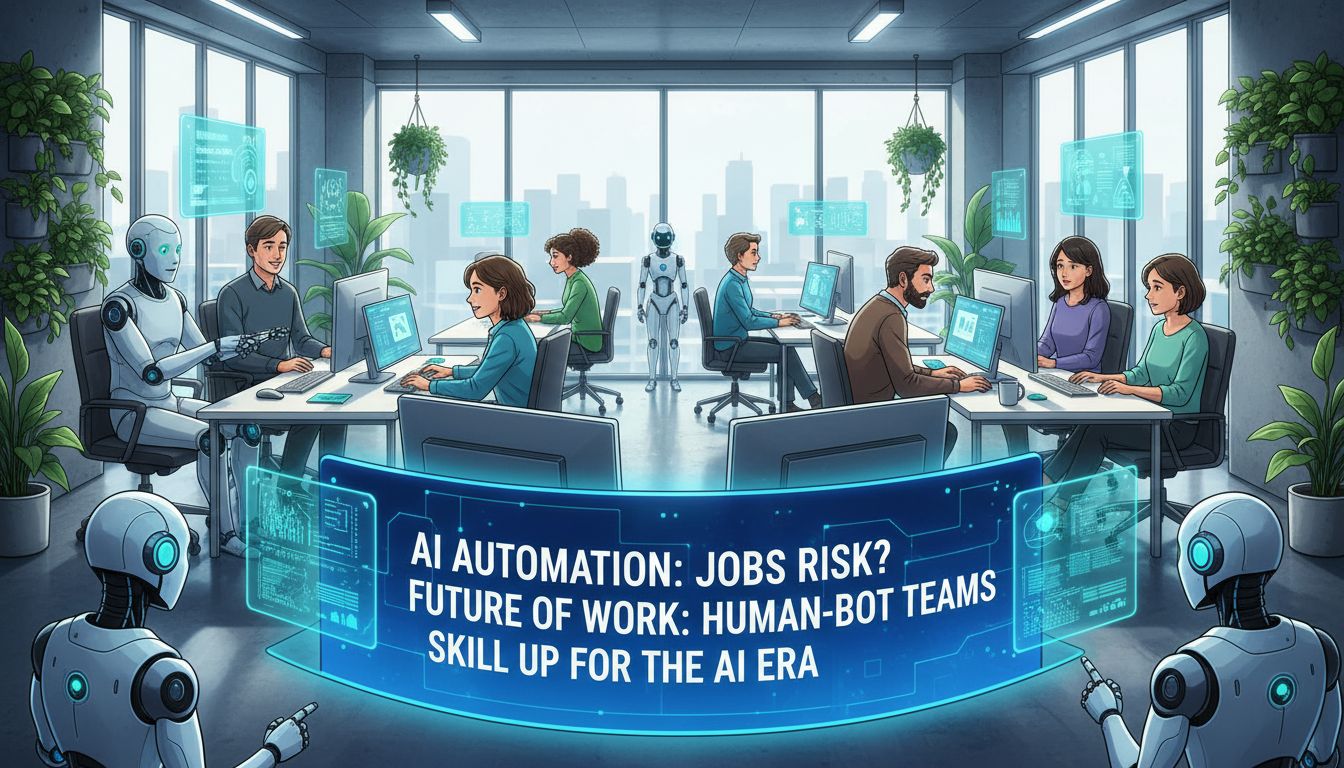The tech world has been captivated by the rapid expansion of AI hardware, with numerous businesses investing in sophisticated equipment to facilitate their artificial intelligence operations. This surge in demand for AI chips and infrastructure is revolutionizing various sectors, as businesses strive to unlock the full potential of generative AI models.
In this blog post, we will explore how the growing need for advanced networking equipment is driving innovation among big tech companies and chip-design startups entering the AI industry. We’ll also delve into Equinix’s success in leasing data-center space, beating analyst expectations due to increased demand from AI companies.
Furthermore, we will discuss the growth potential of advanced networking equipment and its importance in providing high-quality infrastructure for AI development. Additionally, we’ll highlight key players that are benefiting from these growing demands while examining firms creating applications supporting large language models like GPT-3.
Lastly, amidst all this progress lies uncertainty surrounding the permanence of the AI hardware boom. We will analyze possible scenarios for future growth and address concerns related to sustainability and long-term effects on our digital ecosystem.
Table of Contents:
- The AI Boom and its Impact on Computing Power
- Growing Need for Advanced Networking Equipment
- Chip-design Startups Entering the AI Industry
- Equinix’s Success in Leasing Data-Centre Space
- Advanced Networking Equipment: The Future of AI
- Firms Creating Applications Supporting Large Language Models
- Uncertainty Surrounding Permanence of the AI Boom
- FAQs in Relation to Ai Hardware Boom
- Conclusion
The AI Boom and its Impact on Computing Power
The AI rush is still in full swing, with a corresponding spike in the requirement for computing power, spurring chip-design businesses to fight for their share of this lucrative market.
Growing Need for Advanced Networking Equipment
AI applications require immense processing capabilities, driving up the demand for powerful hardware solutions, including advanced networking equipment that can support these data-intensive tasks efficiently.
Chip-design Startups Entering the AI Industry
- Innovative Solutions: Chip-design startups are developing innovative solutions tailored specifically towards meeting AI’s unique requirements.
- Funding Opportunities: Venture capitalists have shown a keen interest in funding these chip-design startups due to the high potential returns on investment.
- Competition: Established tech giants like NVIDIA and Intel are now facing challenges from emerging companies such as Cerebras Systems and SambaNova Systems that focus on creating cutting-edge hardware for AI applications.
The ongoing AI boom has created a significant impact on computing power demand, resulting in an increased need for advanced networking equipment and opportunities for innovative chip-design startups. As this trend continues to evolve, we can expect further advancements in technology catering specifically to AI’s unique requirements.
Equinix’s Success in Leasing Data-Centre Space
Beating Analyst Expectations with Strong Performance
Equinix has managed to capitalize on the increasing number of businesses relying on AI technology to power their operations, exceeding expectations and reporting impressive financial results.
Projected Growth Driven by Increased Demand from AI Companies
- Growing Need: AI applications require powerful hardware and robust networking capabilities provided by state-of-the-art data centres like those offered by Equinix.
- New Market Opportunities: Competition within this sector will only intensify further, creating additional opportunities for companies specializing in leasing data-centre space.
- Sustainability & Scalability: Equinix’s expertise in this area has enabled them to stay ahead of the curve, making them a preferred choice for many AI companies.
This surge in demand can largely be attributed to the rapid expansion of AI companies requiring high-performance computing resources.
In light of these factors, it comes as no surprise that Equinix has been able to thrive amidst the ongoing AI boom, making them a preferred choice for many AI companies.
Advanced Networking Equipment: The Future of AI
As AI applications become more powerful, the advanced networking equipment sector is expected to grow by 40% annually.
Why High-Quality Infrastructure is Crucial for AI Development
AI technologies require robust and reliable infrastructure to support their computational needs, making high-performance computing (HPC) systems essential.
Key Players in the Growing Market
- NVIDIA: With their A100 Tensor Core GPU, NVIDIA is a leading provider of GPU technology for AI research and development.
- Cisco Systems: Known for enterprise networking solutions, Cisco Systems has expanded into advanced networking equipment tailored for HPC environments.
- Mellanox Technologies: Acquired by NVIDIA in 2023, Mellanox specializes in high-speed interconnect solutions for efficient data transfer in HPC environments.
As the AI boom continues, the advanced networking equipment sector will play a crucial role in supporting the growing demands of the industry.
Firms Creating Applications Supporting Large Language Models
As the demand for artificial intelligence (AI) grows, companies are recognizing the need for specialized applications to manage data and host large language models required by AI systems.
Essential Tools for Seamless Management & Hosting Solutions
Reliable management tools and hosting solutions are vital for smooth operation of advanced AI algorithms. OpenAI has developed an API platform that allows easy access and integration with their powerful GPT-3 model.
Market Opportunities Arising Due To Specialized Requirements
- Data storage: Amazon Web Services (AWS) offers cloud-based services tailored towards handling vast quantities of information needed by AI applications.
- Data processing: Google Cloud Platform (GCP) delivers infrastructure designed specifically for running machine learning workloads at scale.
- Data labeling: Appen and Figure Eight offer services to help businesses generate labeled datasets for their AI projects.
The rapid expansion of AI technology has created opportunities for firms specializing in applications supporting large language models. These service providers will continue to play an increasingly important role in enabling seamless management and hosting of complex systems required by this growing industry.
Uncertainty Surrounding Permanence of the AI Boom
As the AI industry continues to grow, there are concerns about its long-term impact and sustainability.
Analyzing possible scenarios for future AI growth
Experts predict that the demand for advanced hardware may decline after an initial spike, but continued advancements in AI capabilities could maintain or even accelerate demand over time.
- Potential slowdown: Growth rates could slow down as companies reach saturation points or face diminishing returns.
- New developments: Continued advancements in AI capabilities could maintain or even accelerate demand for powerful hardware solutions over time.
- Economic factors: Global economic conditions also play a role in the growth of the AI industry.
Addressing concerns related to sustainability and long-term effects
Increased energy consumption by data centers hosting large-scale AI applications raises concerns about environmental sustainability. Ethical considerations surrounding AI technology itself, such as biased algorithms, must also be addressed during development stages.
According to Nature, data centers already account for about 200 terawatt-hours (TWh) of electricity consumption per year, and this number is expected to rise with the growing AI industry.
Stakeholders across industries must carefully assess their strategies related to investing in AI hardware and infrastructure to navigate the complexities associated with an ever-changing technological landscape.
FAQs in Relation to Ai Hardware Boom
Why is Hardware Important in AI?
Hardware plays a crucial role in artificial intelligence as it provides the necessary computing power to process large amounts of data and perform complex calculations. High-performance processors, memory, storage, and networking equipment enable faster training of machine learning models and efficient execution of AI algorithms.
What is the Hardware Behind AI?
The primary hardware components behind AI include GPUs (Graphics Processing Units), TPUs (Tensor Processing Units), FPGAs (Field-Programmable Gate Arrays), ASICs (Application-Specific Integrated Circuits), high-speed memory, storage devices, and advanced networking equipment. These components work together to support AI’s computational demands.
When Did the AI Boom Start?
The current AI boom started around 2012 with breakthroughs in deep learning techniques such as convolutional neural networks. This was further fueled by advancements in GPU technology from companies like NVIDIA that allowed for more efficient training of these models on massive datasets. The availability of big data and cloud computing resources also contributed to this rapid growth.
How Will AI Change the World by 2030?
By 2030, artificial intelligence is expected to transform various industries including healthcare, transportation, agriculture, finance, and education through automation and optimization processes. It may lead to improved decision-making capabilities using predictive analytics while creating new job opportunities requiring specialized skills in AI development and management.
Conclusion
As the AI Hardware Boom continues, the demand for advanced networking equipment and chip-design startups is on the rise.
Equinix is projected to see continued success in leasing data-centre space due to increased demand from AI companies.
High-quality infrastructure is essential for AI development, with key players benefiting from growing demands.
Firms creating applications supporting large language models are providing essential tools for seamless management and hosting solutions, with market opportunities arising due to specialized requirements.
While there may be uncertainty surrounding the permanence of the AI Boom, analyzing possible scenarios for future growth and addressing concerns related to sustainability and long-term effects can help mitigate risks.
It’s important for businesses to stay informed about emerging trends such as the AI Hardware Boom so they can adapt accordingly as technology continues to advance at an unprecedented pace.






